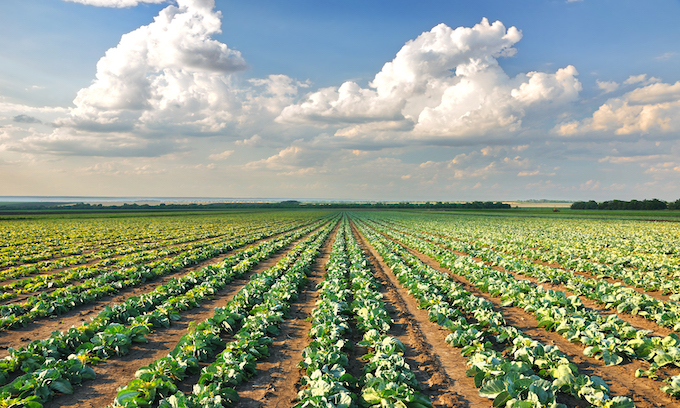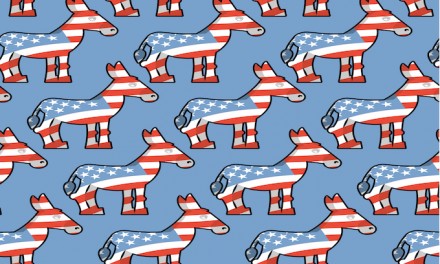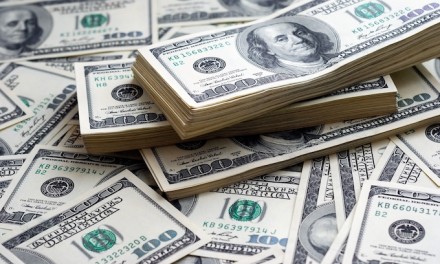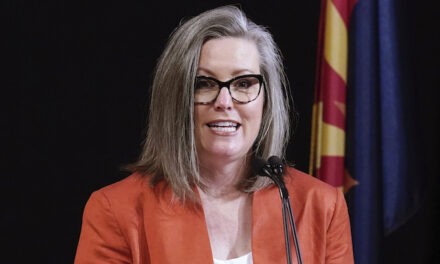A shortage of fertilizer is one part of a confluence of factors behind rising food prices across the United States, as the Biden administration continues to look for financial solutions to help the agricultural sector.
Fertilizer costs account for about 15% of total cash costs for U.S. farmers, while the prices of the nutrient additive have nearly doubled between the summer of 2020 and the end of 2021.
That rising cost of doing business is being passed through the food supply chain and on to consumers, while prices had been increasing because of supply chain disruptions related to the COVID-19 pandemic.
But it’s more complicated than that.
Soaring fertilizer prices are being met with an increased demand for food basics, like wheat and corn, while the conflict in Ukraine is disrupting the supply of both.
Potash is almost entirely used in fertilizers. Mostly produced as potassium chloride, the potash name is given to a group of minerals and chemicals containing potassium, a basic nutrient for plants and key fertilizer ingredient. Potash levels are normally done in measurements of potassium oxide.
Historically, Russia and Belarus have produced around 40% of global potash exports. The world’s biggest producer is the Canadian prairie province of Saskatchewan. However, since Russia was hit with international sanctions for its ongoing invasion of Ukraine, that percentage has dropped. Additionally, the world’s second-largest potash producer, Belaruskali, was hit by U.S. sanctions in August over a disputed presidential election in which President Alexander Lukashenko declared victory.
Russia and Ukraine collectively export 28% of fertilizers made from nitrogen and phosphorus, as well as potassium.
Ukraine is also routinely one of the top-three grain exporters in the world, often referred to in media reports as the “Breadbasket of Europe.” The country accounts for 13% of global corn exports. But nearly three months of war has caused its total grain exports to decline by 500,000 tons per month. That figure is only expected to rise, along with inflationary pressure on food commodities.
Corn requires more fertilizer than virtually any other crop, though fertilizer cost is factored into the price of all commercially harvested crops.
“If you’re not soil sampling, if you’re not using variable rate application, if you’re not using the 4R stewardship principles to be as efficient as possible with your fertilizer, now is the time to do it,” Fertilizer Institute CEO Corey Rosenbusch told The Daily Scoop, a farming trade outlet.
“If there’s any bright light in the current market situation, it’s that it really will drive farmers to adopt and use these nutrient stewardship principles in their farm.”
In response, the Biden administration is attempting to throw a lifeline to the agriculture industry. In March, the Department of Agriculture announced $250 million to help generate additional fertilizer production for American farmers to address the rising costs.
“Recent supply chain disruptions from the global pandemic to Putin’s unprovoked war against Ukraine have shown just how important it is to invest in this crucial link in the agricultural supply chain here at home,” Agriculture Secretary Tom Vilsack said at the time.
On Wednesday, Biden announced further steps to alleviate the price hike, including doubling the original $250 million from March, for fertilizer production.
“Putin’s unjustified invasion of Ukraine has cut off a critical source of wheat, corn, barley, oilseeds and cooking oil,” the White House said in a statement.
“It has also disrupted global supply chains for fertilizer, which farmers depend on to maximize yields. These and other actions, combined with the ongoing pandemic-related disruptions to global supply chains, have put pressure on food prices.”
Included in the aid package, is an increase in the number of counties eligible for double cropping insurance.
Double cropping allows farmers to plant a second crop on the same land in the same year, boosting production without substituting crops. But because of the risks, farmers are often unable to insure the second crop.
The administration is also trying to increase the use of technological applications, using so-called “precision agriculture” techniques to help farmers with nutrient management. Such practices reduce the amount of required fertilizer.
“America’s fighting on two fronts. At home, it’s inflation and rising prices. Abroad, it’s helping Ukrainians defending their democracy,” Biden said during an event at an Illinois farm, where he announced the new measures.
“Putin’s war has cut off critical sources of food.”
Copyright 2022 United Press International, Inc. (UPI). Any reproduction, republication, redistribution and/or modification of any UPI content is expressly prohibited without UPI’s prior written consent.



















Why should the war in Ukraine cause the food grain shortage? What happen to our Bread Basket of America states? Have the woke bunch killed this part of our nation also? We need to get rid of all of them while we still a country.
The corn they produce has been diverted to produce ethanol to add to gasoline which eventually ruins the internal combustion engines so everyone drives electric cars all of which drives the price of grains up making food and animal fodder more expensive!
Well, that’s one way to fight the obesity epidemic.